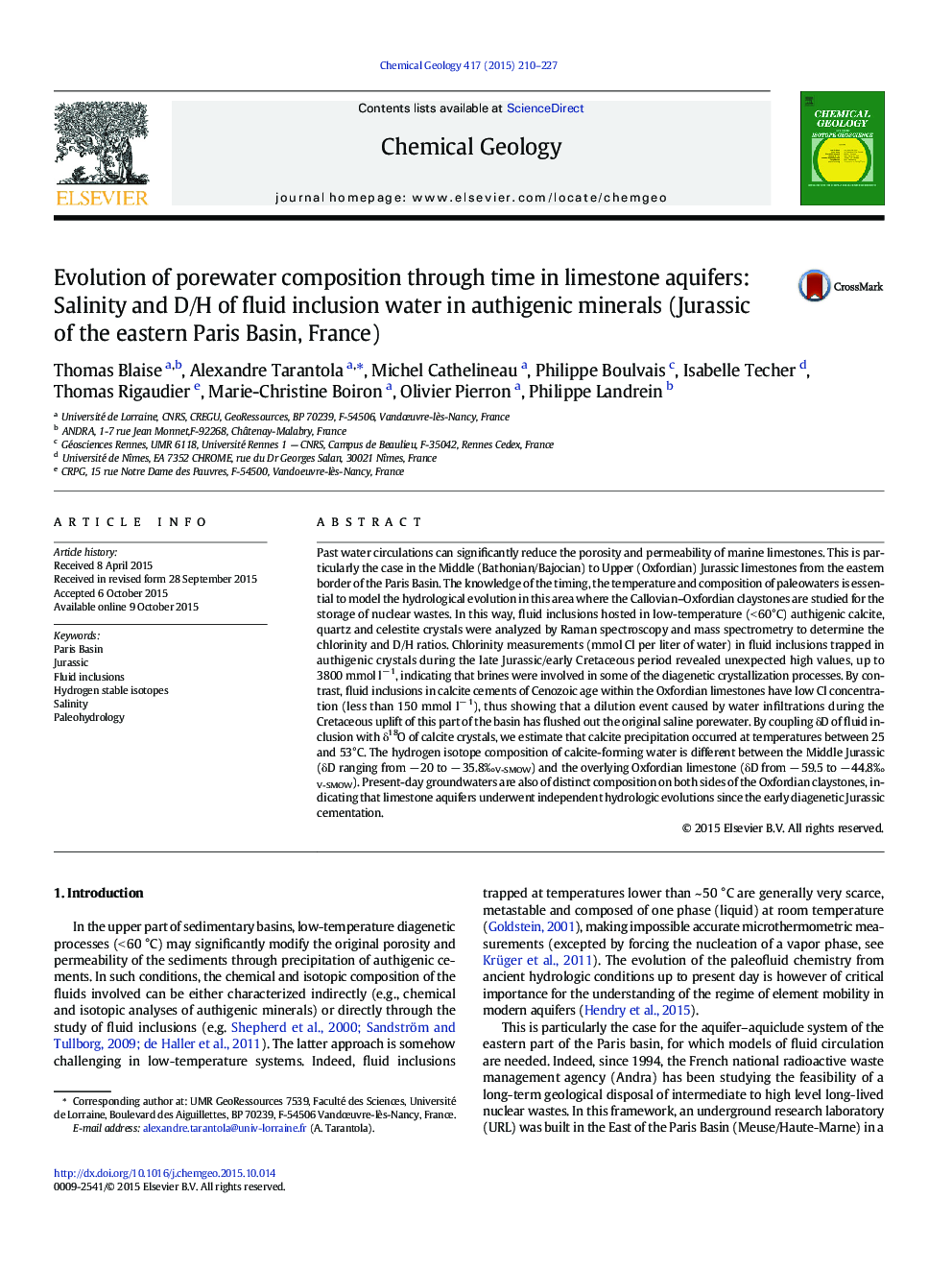| کد مقاله | کد نشریه | سال انتشار | مقاله انگلیسی | نسخه تمام متن |
|---|---|---|---|---|
| 6436265 | 1637557 | 2015 | 18 صفحه PDF | دانلود رایگان |

- First data combining δD and chlorinity of fluid inclusions in the Jurassic of the Eastern Paris Basin
- Brines are identified in calcite crystallized at around 150Â Ma.
- Paleofluid temperatures do not exceed 60 °C.
- Independent hydrological history in limestone aquifers on both sides of the Callovian-Oxfordian claystones
Past water circulations can significantly reduce the porosity and permeability of marine limestones. This is particularly the case in the Middle (Bathonian/Bajocian) to Upper (Oxfordian) Jurassic limestones from the eastern border of the Paris Basin. The knowledge of the timing, the temperature and composition of paleowaters is essential to model the hydrological evolution in this area where the Callovian-Oxfordian claystones are studied for the storage of nuclear wastes. In this way, fluid inclusions hosted in low-temperature (< 60°C) authigenic calcite, quartz and celestite crystals were analyzed by Raman spectroscopy and mass spectrometry to determine the chlorinity and D/H ratios. Chlorinity measurements (mmol Cl per liter of water) in fluid inclusions trapped in authigenic crystals during the late Jurassic/early Cretaceous period revealed unexpected high values, up to 3800 mmol lâ 1, indicating that brines were involved in some of the diagenetic crystallization processes. By contrast, fluid inclusions in calcite cements of Cenozoic age within the Oxfordian limestones have low Cl concentration (less than 150 mmol lâ 1), thus showing that a dilution event caused by water infiltrations during the Cretaceous uplift of this part of the basin has flushed out the original saline porewater. By coupling δD of fluid inclusion with δ18O of calcite crystals, we estimate that calcite precipitation occurred at temperatures between 25 and 53°C. The hydrogen isotope composition of calcite-forming water is different between the Middle Jurassic (δD ranging from â 20 to â 35.8â°V-SMOW) and the overlying Oxfordian limestone (δD from â 59.5 to â 44.8â°V-SMOW). Present-day groundwaters are also of distinct composition on both sides of the Oxfordian claystones, indicating that limestone aquifers underwent independent hydrologic evolutions since the early diagenetic Jurassic cementation.
Journal: Chemical Geology - Volume 417, 6 December 2015, Pages 210-227